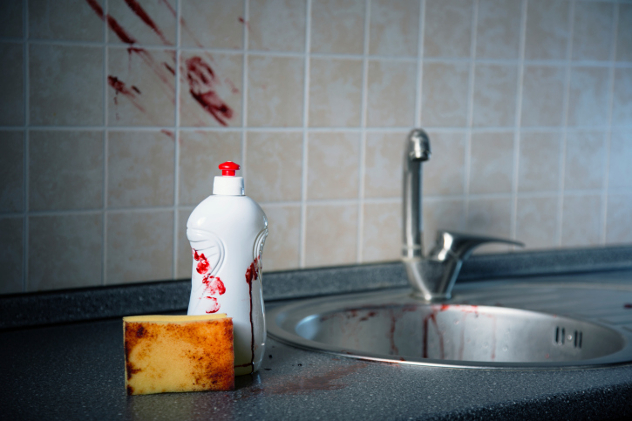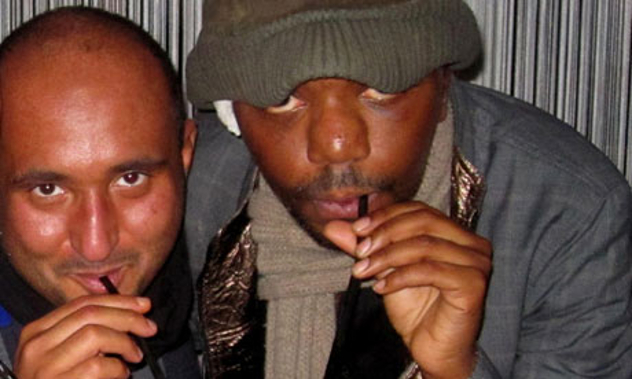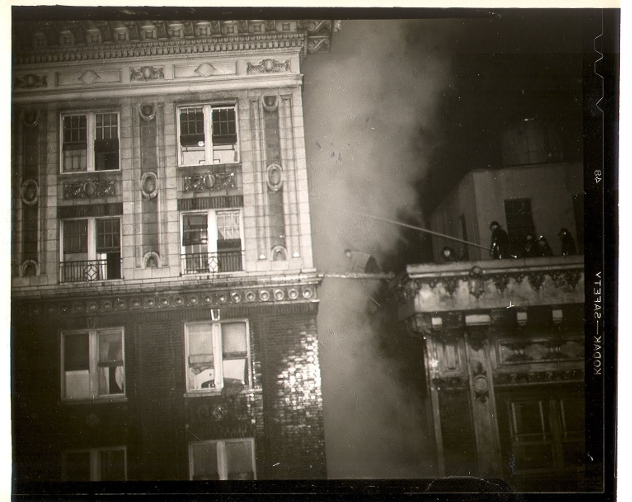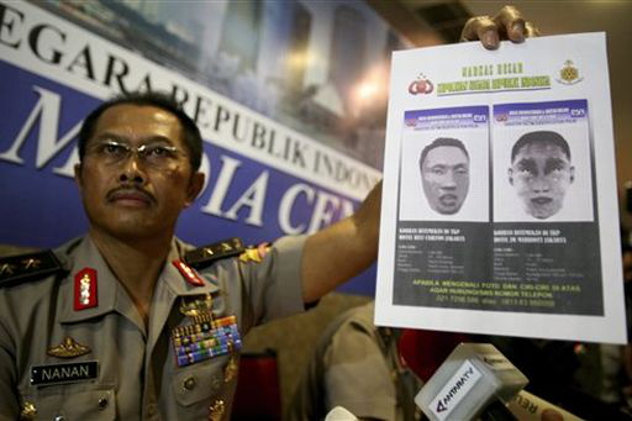 Weird Stuff
Weird Stuff  Weird Stuff
Weird Stuff  Mysteries
Mysteries 10 Tragic Disappearances and Deaths in Joshua Tree National Park
 History
History 10 Ways Childhood Really Sucked in the Old West
 Music
Music 10 Name Origins of Famous Bands from the 1990s
 Religion
Religion 10 Biggest Turnarounds by the Catholic Church
 Weird Stuff
Weird Stuff 10 Unbelievable Times Laws Had Unintended Consequences
 Humans
Humans Ten Historic Women Who Deserve Way More Credit Than They Got
 Movies and TV
Movies and TV 10 Films That Spawned Major Lawsuits
 History
History Ten Times Towns Were Wiped Off the Face of the Earth
 Creepy
Creepy 10 of the Most Disturbingly Haunted Public Houses in the UK
 Weird Stuff
Weird Stuff 10 Niche Subcultures That Are More Popular Than You Might Think
 Mysteries
Mysteries 10 Tragic Disappearances and Deaths in Joshua Tree National Park
 History
History 10 Ways Childhood Really Sucked in the Old West
Who's Behind Listverse?

Jamie Frater
Head Editor
Jamie founded Listverse due to an insatiable desire to share fascinating, obscure, and bizarre facts. He has been a guest speaker on numerous national radio and television stations and is a five time published author.
More About Us Music
Music 10 Name Origins of Famous Bands from the 1990s
 Religion
Religion 10 Biggest Turnarounds by the Catholic Church
 Weird Stuff
Weird Stuff 10 Unbelievable Times Laws Had Unintended Consequences
 Humans
Humans Ten Historic Women Who Deserve Way More Credit Than They Got
 Movies and TV
Movies and TV 10 Films That Spawned Major Lawsuits
 History
History Ten Times Towns Were Wiped Off the Face of the Earth
 Creepy
Creepy 10 of the Most Disturbingly Haunted Public Houses in the UK
10 Creepy Hotel Events That Will Make Your Skin Crawl
Hotels have frequently been the settings for some gruesome true stories. Here are 10 hotel-related events guaranteed to churn your stomach and astound you.
10 Sickening Synchronicity

Elisa Lam traveled from her home in Vancouver to check into the infamous Cecil Hotel in Los Angeles in early 2013. The 21-year-old was suffering from bipolar disorder and was last seen on hotel CCTV footage behaving strangely in an elevator, pressing multiple buttons and running in and out of the elevator’s doors.
For reasons known only to herself, Elisa wound up inside one of the 1.2 by 2.4 meter (2 x 8 ft) cylindrical metal water tanks on the roof. Her decomposing body was discovered weeks later when guests began to complain of low water pressure. Guests had been drinking, cleaning their teeth and showering with the tank-water the whole time.
However, this event has an even creepier twist. Coinciding with the death of Elisa Lam, an outbreak of tuberculosis was spreading through downtown Los Angeles. Health authorities were urging citizens to get tested. The name of the tuberculosis test was the Lam Elisa Test.
9 Blues Kills Mood, Halts Food

George R. Sanders was 40 when he checked into the Dixie Hotel in Manhattan in 1931, determined to end his own life. He got a room on the seventh floor but soon doubled his suicide effort by requesting one on the fourteenth floor instead. He left a thoughtful note for police: “Cause of death, suicide. Reason, mental depression. Letters for safe boxes and other papers will be found in the top bureau drawer, right side, at home. See that instructions are carried out.” George had considered almost everything, being such a considerate guy. But one thing he didn’t consider was where he’d land after jumping.
George crashed through the roof of an adjacent restaurant and landed right at the feet of a horrified dining couple and the restaurant’s night-manager. Ironic that a man who tied up the final details of his life so concisely and neatly should “check out” in such a psychologically scarring and messy fashion.
At least the restaurant’s staff and patrons weren’t quite as unlucky as the innocent pedestrian who was killed by a jumping suicide in 1962 while passing the Cecil Hotel in Los Angeles.
8 Denial Is Not A River In Egypt, Or Saudi

Saudi Arabian prince Saud Abdulaziz bin Nasser al Saud violently murdered his male submissive slave (on the left and right of the photograph, respectively) in a top London hotel in 2010. There was a sexual element to the murder, but the prince repeatedly denied this. He was also charged with grievous bodily harm after ferociously attacking the submissive in one of the hotel’s lifts—the whole incident being caught on CCTV.
The submissive, whose name was Bandar Abdulaziz, had bite marks on his cheeks and evidence of bites on his ears. Some of the bite marks predated the murder and dental patterns matched Al Saud’s teeth. The bites were believed to have occurred in sadistic sexual situations. Apparently the pair had been carrying on their insanely brutal master-slave relationship for some time.
Al Saud had frequently attacked his personal servant “for his own personal gratification.” He denied his homosexuality even when a gay masseur gave evidence. Al Saud had allegedly requested the masseur after viewing him on an “extremely homoerotic website.” The prince was denied diplomatic immunity and jailed for life despite his wealth and royal blood. But had he confessed his homosexuality, he may well have been decapitated—if allowed to return to Saudi Arabia anyway, since homosexuality remained a capital offense there.
7 Hellish Hotel-ish Version Of Titanic

The Winecoff Hotel, famously referred to by its designers as “absolutely fireproof,” became a real-life towering inferno. The widely reported tragedy occurred in Atlanta in 1946, and 119 people lost their lives. The building had zero fire escapes, zero alarms or sprinklers, and one great stairwell in the middle. The stairwell was the only means of escape, but instead of providing a safe exit route, it quickly became a chimney full of noxious smoke.
Firefighters could only reach halfway up the 16-story building. People were forced to jump from the upper levels. Thirty-two died from falling, many having tied sheets into makeshift ropes in futile attempts to escape the heat, smoke, and flames. Amateur photographer Arnold Hardy was awarded a Pulitzer Prize for his photograph of a woman falling from the blaze. The fire was believed to have been started by a cigarette being thrown onto a mattress in the third floor hallway, perhaps with the deliberate intention of setting the building alight.
6 Castro Castrado

Carlos Castro, 65, was a famous Portuguese television presenter and journalist. He was preparing to celebrate New Year’s Eve in New York’s Time Square. The holiday with his 23-year-old male-model boyfriend Renato Seabra seemed to be going well at first, but the relationship deteriorated quickly, apparently along with Seabra’s mental state.
Seabra became angry when spurned by Castro and denied further access to the sugar daddy’s money. The couple began to argue noisily. Seabra smashed Castro’s head in with a laptop and, as his lover lay bleeding on the floor, castrated him with a jagged broken wine glass and a blunt corkscrew.
At the court trial Seabra initially pleaded insanity. He claimed that at the time he believed he was ridding the world of homosexuality by removing Castro’s testicles and then wearing them on his wrists. The prosecution, however, claimed that Seabra was only faking madness. Apart from his violent outbursts he was shown to have acted in a cold and manipulative way throughout the entire relationship. As the judge said in his summary before convicting him to 25 years in prison, it was an extremely brutal, sadistic, and dehumanizing act.
5 Alert Amazes After Shirt Blazes

Frederick Berry Jr. was a young man from Wayne, Nebraska who’d recently arrived in New York to seek his fortune. He was staying in a rented room on the 12th floor of the Dixie Hotel in Manhattan when he received a letter of warning from his father. According to the letter, the young man’s mother had been visited by a terrifying premonition that something disastrous was about to happen to her son.
Only a day or so later, hotel staff noticed smoke coming from under the door of Berry’s room. They entered the room and found him fatally burned, unconscious but sitting upright in a smoldering chair. Clothing on his upper body had completely burned away. He was taken to Roosevelt Hospital but died of his injuries just three and three-quarter hours after having been discovered.
Back in the hotel room, the letter was found. In the letter, Berry’s father, a lawyer, asked his son to be careful and to write home daily until his mother became less anxious.
4 Diamond Heist Do-Or-Die

A man who called himself Dr. George D. Pullman checked into the Savoy Hotel, London, on March 1, 1909. He’d arrived at the hotel in fine clothes, speaking in an American accent and ordering a whole suite of rooms that he never intended paying for. Hotel staff were so impressed by his claim that his wife and maid were following in a motorcar that apparently nobody questioned Pullman’s authenticity. Cementing his first impression he later asked reception if there was anywhere close by where he could purchase automobile tires (this being an obvious sign of wealth at the time).
Pullman went instead to a jeweler’s shop in the Burlington arcade where he asked to view a range of diamond rings and an expensive diamond collar necklet. He told the jeweler to have the rings sent to the Savoy so that his wife could inspect them. He was about to leave the store when he appeared to change his mind. Turning back he told the jeweler to send the necklet as well, but to first reduce the price by removing three diamond drops that were attached to it.
When Pullman left the jeweler’s, the assistant manager, whose name was Penton, followed him to the Savoy, bringing the jewelry with him. Like the hotel staff, Penton was deceived at first by Pullman’s grand impression. He produced the jewels and waited in the sitting room of the hotel suite while Pullman went through to another room where his wife was supposedly dressing.
Pullman took five rings through with him and left the door slightly open. Penton heard Pullman speaking and a woman’s voice responding. When Pullman returned he said his wife liked the rings and would now like to see the necklet. He went through to the other room again taking the necklet with him, but this time closed the door.
Penton became suspicious when both voices stopped. He let himself out into the corridor and waited. A figure in a soft cap and heavy overcoat emerged from the adjacent room seconds later. It was a disguised Pullman. There was no wife to be seen. Caught red-handed, the con artist next tried to fake distress and told Penton to call a maid because his wife had suddenly fallen ill.
The jeweler would not be deceived again. They tussled until Pullman surrendered, returned four of the five rings, cowered on the floor and begged to be released while Penton stood guard in the doorway until help arrived. This was according to Penton, who was the hero of his own incontestable version of the story at this point since no one else was present. Finally, if Penton is to be believed, the conman produced a razor from his pocket and slit open his own throat. The jeweler ran to get help, but when he returned with a porter, Pullman was nowhere to be seen.
There were, however, some major drawbacks to the impersonator’s unorthodox escape method: 1) he left a trail of blood for his pursuers to follow, and 2) having climbed out onto a balcony and down a spiral staircase, by the time he’d reached the bottom he was too exhausted from blood loss to continue.
At the coroner’s inquest there was particular interest concerning the razor. Had it really come from Pullman’s pocket? The coroner asked Penton if he ever carried arms and Penton denied that he ever did. If you believe Penton, leaving the jeweler’s shop unarmed with a bag full of incredibly valuable jewels at the request of a complete stranger was normal practice. To our mind, there’s still something about this story that isn’t quite the full carat.
3 Dozens Die At Hyatt

Over a thousand people had shown up at the Hyatt Regency Hotel, Kansas City, to watch and participate in a dance back in 1981. The dance was held in the hotel’s lobby and many spectators watched from the second-, third- and fourth-floor walkways suspended directly above. Prior to the event the walkways had been slightly altered from their original design. A small change increased the stress on load-bearing rods, which could barely support the weight of the walkways themselves, let alone the added weight of dozens of dance-fans. Even more tragically it was the fourth-floor walkway that collapsed first, collecting the second-floor walkway—directly beneath it—on its way down.
The story was news all across America and the world as the rescue operation continued over a 14-hour period. Those who’d been injured beyond hope of recovery were told they were going to die and given morphine. Many of those already dead were dismembered in order to provide access to those yet living but trapped in the wreckage. A total of 114 died in the Wyatt disaster, making it the deadliest structural collapse in American history until the Twin Towers tragedy. Participants in the rescue operation remained psychologically traumatized long after the event itself.
2 Terrorist Loses Head But Ultimately Saves Face

It was lunchtime in a busy commercial area of Jakarta, Indonesia, back in August 2003. Asmar Latin Sani was driving a Toyota loaded with explosives. The last remaining seconds of his life were captured on CCTV camera footage as he pulled up outside the Marriott Hotel and was approached by a security guard . . .
The vehicle exploded. Dozens of windows instantly shattered within the deadly blast radius. Burned bodies lay in the street. People reportedly ran from office buildings holding their flaming faces. The first five floors of the Marriott were a mess of twisted metal, shattered glass and rising black smoke.
The explosion was so powerful that initially it must have seemed unlikely that the driver would ever be identified. The situation changed however when Sani’s severed head was discovered on the fifth floor. After some facial reconstruction, the head was shown to two jailed terrorists who recognized Sani and confessed to having recruited him. Sani’s identity was later confirmed by DNA testing carried out on the head.
1 Thailand’s Death Island

Two Canadian sisters staying at a hotel on the Thai resort of Phi Phi Island died under mysterious circumstances in 2012. Their bodies were found huddled in their beds with bleeding gums, blue lips and discolored fingernails and toenails. There were lesions all over their skin and the room was full of vomit. They’d already been dead for some time, having last been seen returning from a bar on June 13th, and apparently having remained in their room until a maid entered with a master key on the 15th.
The young women had clearly been poisoned. Initial autopsy reports from Thailand indicated serious food poisoning. A Canadian coroner later quashed the theory that the insecticide DEET had poisoned the women, claiming that the amount of DEET in the bodies was too small to have been harmful.
In 2009, two other young women—one an American and the other Norwegian—had died in a similar manner under similarly mysterious circumstances at the same resort. A number of other such deaths had also been reported. The causes of these deaths were again never established though poisoning was suspected.
Another spate of suspicious deaths had occurred in the northern Thai city of Chiang Mai, where several visitors from various countries staying at the same hotel had possibly been killed by exposure to chlorpyrifos, a chemical spray used to kill bed bugs. Many have speculated there may be a cover-up on the part of Thai authorities who fear harm to Thailand’s tourism trade. Thai police closed the case on the Canadian sisters’ deaths just three months later.
HTR Williams is a freelance writer resident in New Zealand. Read fiction and articles for FREE at htrwilliams.com








